Traditions of Sinhala Aluth Avurudda
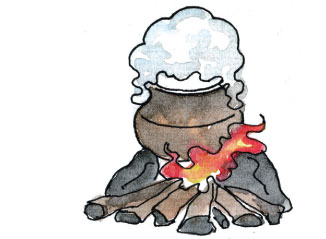 Sinhala Aluth Avurudda was celebrated in the Kandyan Kingdom as a
national festival under the patronage of the kings. This was done in
keeping with the rituals. The astrologers worked out Nekath (auspicious
times) to perform the rituals to bring about prosperity and happiness to
the people and country. Sinhala Aluth Avurudda was celebrated in the Kandyan Kingdom as a
national festival under the patronage of the kings. This was done in
keeping with the rituals. The astrologers worked out Nekath (auspicious
times) to perform the rituals to bring about prosperity and happiness to
the people and country.
Sinhala Avurudda dawns when the Sun moves from Meena Rashi to Mesha
Rashi completing a cycle of a twelve-month period. The transition time
know as Sankranthi takes place on April 13 or 14. It is during this
period that some of the rituals are performed to mark this important
event of the year.
The dawn of Aluth Avurudda signifies social customs and good
behaviour of the Sinhala people. The majority of the people being
farmers, after their major harvest Maha of the year is over, celebrate
the occasion in the form of giving thanks. The customs and rituals
portray the beliefs and thinking of the people whose life is centred
around agriculture.
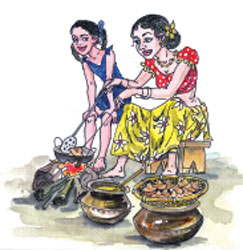
Rituals connected with Aluth Avurudda commence with bathing on the
last day of the old year (Parana Avurudda) and viewing the moon on the
same night.
In the village temple, the pealing of the bell accompanied with the
beating of drums (Hewisi) makes the people aware of the times to perform
different rituals.
The custom of offering betel to parents and elders demonstrates the
act of paying gratitude. The children in turn receive blessings from
parents moulded according to Buddhist thought. The sense of goodwill and
friendship among relations and friends is also seen during the festival
time.
Most of the rituals are linked with the village temple. People visit
the temple during the time of Sankranthi the transitional period when
they believe that there are no auspicious times (Nekath) to engage
themselves in different tasks.
 This time is called Nonagathe during which people devote their time
in performing religious practices. It is for this reason it is also
called Punniya Kale when people stop all their activities, and visit the
temple to accrue merit and get their blessings from the monks. This time is called Nonagathe during which people devote their time
in performing religious practices. It is for this reason it is also
called Punniya Kale when people stop all their activities, and visit the
temple to accrue merit and get their blessings from the monks.
The belief in the arrival of Avurudu Kumaraya attired in princely
clothes gives the idea of the dawn of the New Year. The prince comes in
a horse-drawn carriage travelling in a fixed direction. The dress he
wears varies in colour from year to year in keeping with the colour
meant for the particular year. prince comes in
a horse-drawn carriage travelling in a fixed direction. The dress he
wears varies in colour from year to year in keeping with the colour
meant for the particular year.
The time is opportune for the women folk to commence their work at
their respective homes. They begin by facing the correct direction and
light the hearth to prepare the traditional Kiribath. Prior to this,
milk is boiled in a newly earthen pot symbolising prosperity when the
milk spills over from all sides of the pot.
Another meal is cooked along with a curry Hath Maluwa that has seven
different flavours which is considered as a delicacy prepared during New
Year time. Other sweetmeats specially prepared for the festive season
are made in advance to serve the visitors who drop in.
During the days of the Kandyan Kingdom, the anointing of oils and
Nanu (Herbal mixture) was done before taking the ceremonial bath. This
was a feature during the new year, showing the patronage of the Kings.
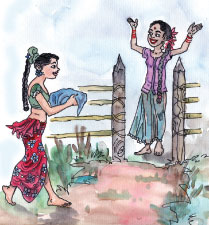 It was their special interest taken by them to look after the health
of the people. The anointing ceremony was planned as a religious
ceremony by the royal Nekath Mohottala, who would directly supervise it
in accordance with his instructions. The royal physician prepares the
oils as well as Nanu (herbal mixture) for applying on the head before
taking a bath in the new year. It was their special interest taken by them to look after the health
of the people. The anointing ceremony was planned as a religious
ceremony by the royal Nekath Mohottala, who would directly supervise it
in accordance with his instructions. The royal physician prepares the
oils as well as Nanu (herbal mixture) for applying on the head before
taking a bath in the new year.
The applying of Nanu is done only on Wednesday because it is on that
day Nanumuraya is performed at Sri Dalada Maligawa and also at four
devales in Kandy. Nanumuraya is meant for bathing the deities in the far
off devales. This is performed in the form of a symbolic manner to bathe
the four guardian deities of Lanka.
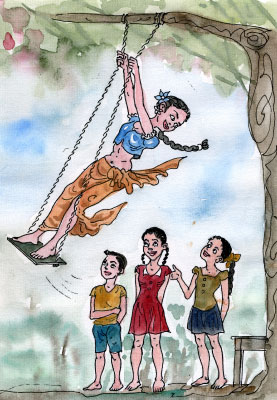
The preparation of oils and the herbal mixture are done by extracting
the juices from herbal leaves, flowers and fruits (seeds). The oils and
juices are poured into 1000 small clay pots and then taken on the day
before the New Year to Natha Devale Hewisi Maduwa.
The officials from Sri Dalada Maligawa, three other devales,
outstation devales, Raja Maha Viharas, and 65 royal listed places
assemble at Natha Devala.
The Kariyakorala of Sri Dalada Maligawa then distributes the oils and
Nanu among those gathered who in turn take them in procession to their
respective places of worship. These preparations are distributed among
the people who use them on the day of the application of oil and Nanu
anointing before bathing.
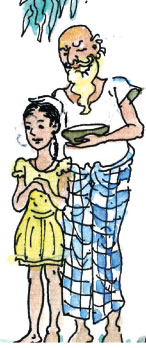 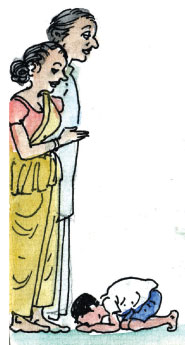 This practice continues to this day. The reason for the selection of
Natha Devala was because of the belief that God Natha had curative power
and hence Natha Devala was selected as the venue for the distribution of
oils and Nanu. This practice continues to this day. The reason for the selection of
Natha Devala was because of the belief that God Natha had curative power
and hence Natha Devala was selected as the venue for the distribution of
oils and Nanu.
Sinhala Aluth Avurudda cannot be classified as a religious festival.
However, customs and rituals associated with Aluth Avurudda have been
fashioned according to Buddhist beliefs.
- Internet |

